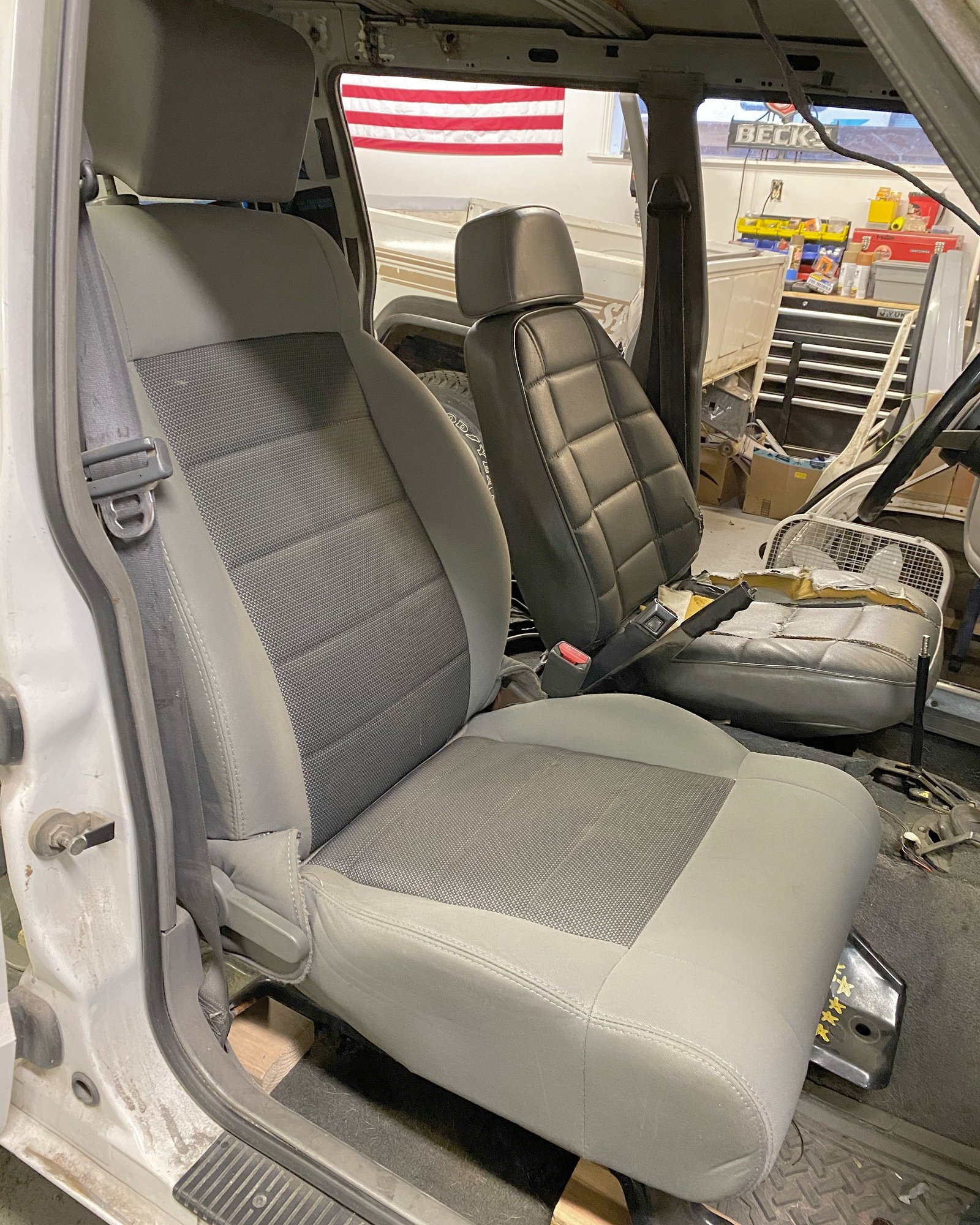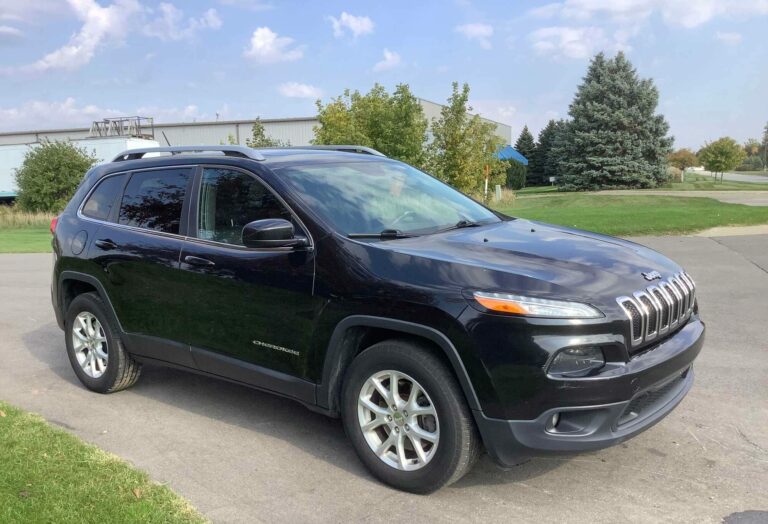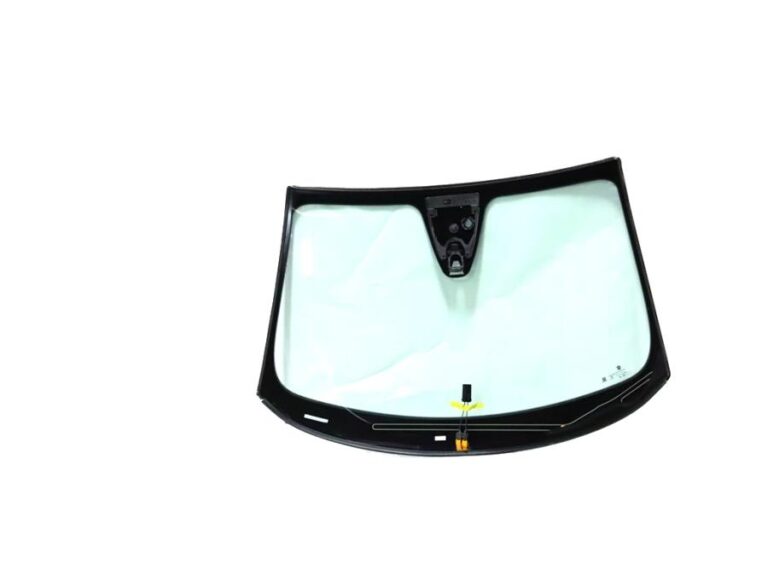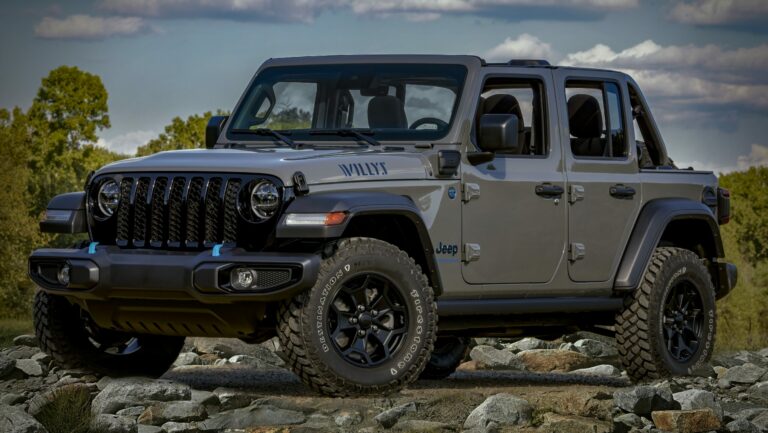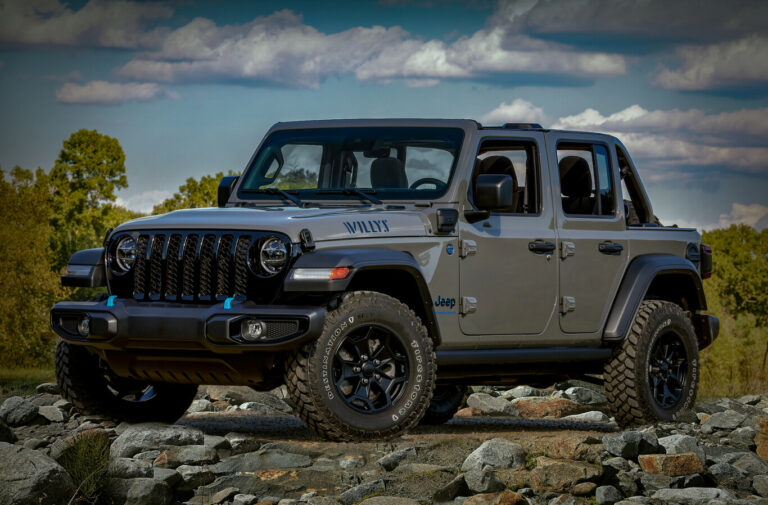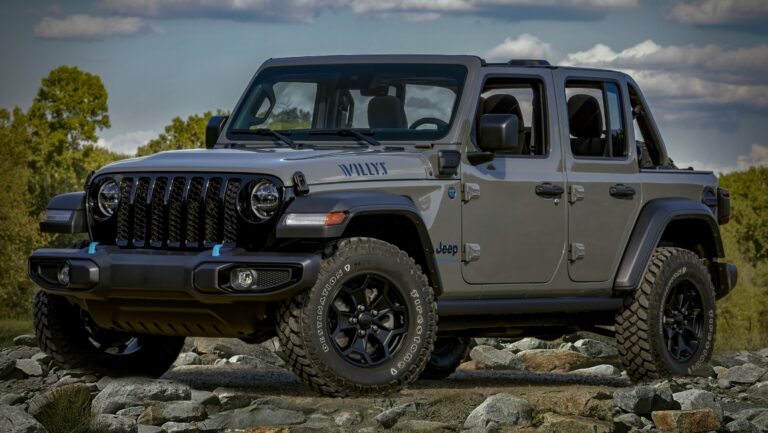Jeep Cherokee XJ Seats: A Comprehensive Guide to Comfort, Function, and Upgrade
Jeep Cherokee XJ Seats: A Comprehensive Guide to Comfort, Function, and Upgrade jeeps.truckstrend.com
The Jeep Cherokee XJ, produced from 1984 to 2001, is an icon of the automotive world. Renowned for its rugged simplicity, off-road prowess, and surprising daily drivability, the XJ has amassed a loyal following that continues to grow. While much attention is often paid to its robust drivetrain, solid axles, and unibody construction, one often-overlooked yet critical component to the XJ ownership experience is its seating. Jeep Cherokee XJ seats are more than just a place to sit; they are central to the vehicle’s comfort, interior aesthetics, and even its functionality, especially for those who spend long hours on the trail or the commute. Understanding the nuances of XJ seats – from their original design to modern upgrade options – is essential for any owner looking to restore, customize, or simply improve their beloved classic.
This comprehensive guide will delve deep into the world of Jeep Cherokee XJ seats, exploring their original characteristics, common issues, the compelling reasons for replacement or upgrade, various types of solutions available, and practical advice for navigating the process.
Jeep Cherokee XJ Seats: A Comprehensive Guide to Comfort, Function, and Upgrade
The Anatomy of XJ Seats: A Closer Look at Original Design
From the factory, Jeep Cherokee XJ seats were designed with a balance of utility and comfort, albeit with varying levels of luxury depending on the trim package.
- Front Seats: Most XJs featured individual bucket seats for the driver and front passenger. Early models (pre-97) often had more squared-off designs, while the ’97+ facelift brought slightly more contoured, modern-looking seats.
- Materials: The vast majority came with durable, often patterned, cloth upholstery. Higher-end trims like the Limited or Country models offered leather or "leather-like" vinyl options, often with power adjustments for the driver’s seat.
- Adjustments: Basic manual adjustments included fore/aft sliding and recline. Lumbar support was a common manual feature, often controlled by a lever or knob on the side of the seat. Power seats, when equipped, added height and tilt adjustments.
- Rear Seats: The XJ typically came with a 60/40 split-folding rear bench seat. This design was incredibly practical, allowing for versatile cargo configurations. The rear seat bottoms could often be flipped forward before folding the seatbacks flat, creating a surprisingly large and flat load floor.
- Materials: Matched the front seats – primarily cloth, with leather options on premium trims.
- Features: Rear headrests were standard on later models and often optional on earlier ones. Integrated armrests with cupholders were also common on ’97+ models.
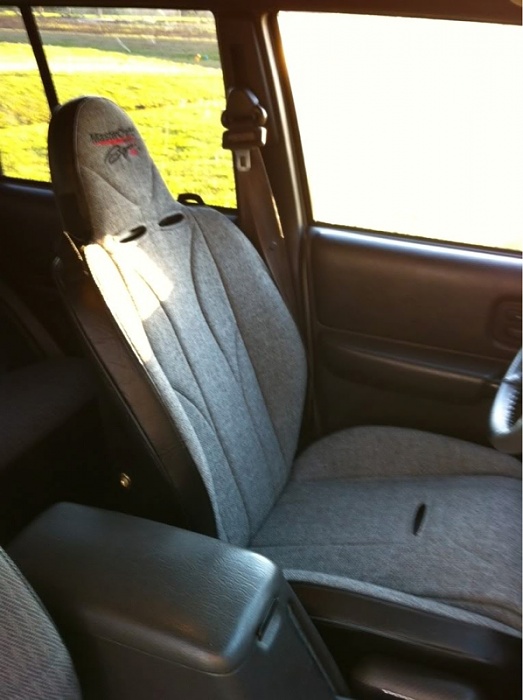
Common Issues with Original XJ Seats:
Over decades of use, XJ seats invariably show their age.
- Foam Collapse: The seat foam, particularly in the driver’s bottom cushion, tends to compress and break down, leading to a "sunk-in" feeling and reduced comfort.
- Fabric/Leather Wear: Rips, tears, stains, and faded upholstery are common, especially on the outer bolster of the driver’s seat from ingress/egress.
- Frame Rust/Wear: While less common, the steel frames can rust, particularly if exposed to moisture, or develop squeaks and wobbles from worn bushings or loose bolts.
- Recline Mechanism Failure: The mechanisms that allow the seatback to recline can seize or break.
- Power Seat Malfunctions: Worn motors, broken gears, or electrical issues can render power adjustments inoperable.
Why Upgrade or Replace Your XJ Seats?
Given the common wear and tear, there are compelling reasons for XJ owners to consider upgrading or replacing their seats:
- Enhanced Comfort & Ergonomics: Worn-out seats can lead to back pain and fatigue, especially on long drives or challenging trails. Newer seats, whether OEM or aftermarket, can dramatically improve comfort and support.
- Aesthetic Refresh: New seats or covers can revitalize the entire interior, making a worn XJ feel much newer and more inviting.
- Improved Durability for Off-Roading: Stock seats are adequate for light trails, but serious off-roaders often seek seats with better bolstering to keep them secure during aggressive maneuvers, and more robust materials that can withstand dirt, mud, and water.
- Customization and Personalization: Upgrading seats is a fantastic way to inject personal style into your XJ, whether aiming for a vintage restoration, a rugged off-road look, or a more modern, luxurious feel.
- Addressing Safety Concerns (Minor): While XJs lack modern seat-integrated airbags, a properly bolstered and supportive seat can contribute to better driver control and reduced fatigue, indirectly enhancing safety.
Types of XJ Seat Replacements & Upgrades
The market offers a wide array of options for XJ seat solutions, catering to various budgets and needs:
-
OEM Refurbishment/Repair:
- Description: This involves repairing the existing seat frames, replacing worn foam, and reupholstering them with new fabric or leather.
- Pros: Retains the original look and fit, often the most authentic option for restorations.
- Cons: Can be labor-intensive and costly if done professionally. Finding original matching fabric can be challenging.
-
OEM Swaps from Other Vehicles:
- Description: A popular and cost-effective method involves installing seats from other Jeep or Chrysler vehicles that are known to have compatible dimensions or easily adaptable mounting points.
- Popular Swaps:
- Jeep Grand Cherokee (ZJ/WJ): ZJ (1993-1998) seats are a very common and relatively easy swap, often requiring only minor bracket modification or adapter plates. WJ (1999-2004) seats are also popular but require more significant adaptation. These often provide better bolstering and comfort, and are frequently available in leather.
- Jeep Liberty (KJ): Some owners adapt KJ seats, which are known for good comfort.
- Dodge Neon/PT Cruiser: Surprisingly, some front seats from these vehicles can be adapted, offering a more modern, sportier feel for budget-conscious builders.
- Pros: Often more comfortable and aesthetically pleasing than original XJ seats, readily available in junkyards or online, generally affordable.
- Cons: May require fabrication of adapter brackets, wiring for power seats can be complex, rear seat swaps are rarely plug-and-play.
-
Aftermarket Performance/Off-Road Seats:
- Description: Seats specifically designed for enhanced comfort, support, and durability, often from brands like Corbeau, PRP Seats, Smittybilt, Recaro, or Sparco.
- Types:
- Reclining Sport Seats: Offer better bolstering than stock while retaining recline functionality.
- Fixed-Back Racing Seats: Maximum bolstering, ideal for serious off-road racing but less practical for daily driving.
- Suspension Seats: Common in dedicated off-road vehicles, these seats use internal suspension to absorb bumps, significantly reducing driver fatigue on rough terrain.
- Pros: Superior comfort and support, excellent durability, wide range of styles and materials (vinyl, cloth, tweed, leather).
- Cons: Generally the most expensive option, often require specific mounting brackets (which may add to the cost), can be bulky, and some designs may not suit a daily driver.
-
Seat Covers:
- Description: The simplest and most immediate solution for worn seats. Available in a vast array of materials (neoprene, canvas, ballistic nylon, leatherette) and styles.
- Pros: Affordable, easy to install, protect original upholstery, can instantly refresh the interior’s look.
- Cons: Don’t address underlying foam collapse or frame issues, can sometimes shift or wrinkle, may not provide the same integrated feel as new upholstery.
The "How-To" Guide: Swapping XJ Seats
Replacing your XJ seats, especially the fronts, is a manageable DIY project for most mechanically inclined individuals.
Tools Needed:
- Socket wrench set (typically 13mm, 15mm, Torx bits for some bolts)
- Breaker bar (for stubborn bolts)
- Pry bar (for plastic trim)
- Wire cutters/strippers (for power seats)
- Multimeter (for checking wiring)
- Drill (for new mounting holes if needed)
- Angle grinder/welder (for fabricating brackets, if necessary for swaps)
Basic Removal Steps (Front Seats):
- Disconnect Battery: Always disconnect the negative battery terminal before working on electrical components.
- Remove Trim: Carefully unclip any plastic trim pieces covering the seat bolts.
- Unbolt Seat: There are typically four bolts securing each front seat to the floor. These can be tight and sometimes rusted. Use penetrating oil if needed.
- Disconnect Wiring: If you have power seats, disconnect the electrical connector underneath the seat. Also, disconnect the seat belt buckle wiring (if present).
- Remove Seat: Carefully lift the seat out of the vehicle. Be mindful of its weight.
Basic Removal Steps (Rear Seats):
- Remove Seat Bottom: Most XJ rear seat bottoms are held in by two bolts at the front and then simply lift up and out from a rear retaining clip.
- Remove Seat Backs: The seat backs are usually secured by bolts at the bottom pivots and sometimes at the top near the C-pillar. Remove these and lift the seat backs out.
Considerations for Swaps:
- Mounting Brackets: This is the biggest hurdle. Some OEM swaps (like ZJ front seats) are nearly bolt-in or require simple adapter plates. Aftermarket seats almost always require specific XJ-compatible mounting brackets, which are sold separately by the seat manufacturer or aftermarket companies. Never compromise on secure mounting.
- Wiring (Power Seats): If swapping power seats into an XJ that didn’t have them, you’ll need to run new power and ground wires from a fused source. Consult wiring diagrams for your XJ and the donor vehicle.
- Seat Belt Receivers: The original XJ seat belt receivers may not fit the new seats. You might need to swap the receivers from the donor seats or purchase aftermarket universal ones. Ensure they are securely mounted and functional.
- Airbags (Not an XJ issue): Modern seats often have side airbags. XJs do not have seat airbags, so these wires will remain unused or can be removed if present on the donor seat.
Important Considerations Before You Buy/Swap
- Budget: Determine your spending limit. Options range from cheap junkyard finds to high-end custom setups.
- Intended Use: Daily driver comfort vs. off-road performance vs. show truck aesthetics – your primary use case will dictate the best choice.
- Installation Complexity: Are you comfortable with minor fabrication and wiring, or do you prefer a simple bolt-in solution?
- Comfort vs. Durability: Performance seats often prioritize bolstering and durability, sometimes at the expense of plush comfort.
- Legal Aspects: Ensure any modifications comply with local regulations, particularly regarding seat belt mounting and structural integrity.
- Maintaining the Classic Look: Decide if you want to retain the original aesthetic or modernize the interior.
Tips for Maximizing Your XJ Seat Experience
- Clean and Condition Regularly: For both original and upgraded seats, regular cleaning and conditioning (especially for leather) will extend their life and appearance.
- Address Minor Tears Promptly: Small rips can quickly become large ones. Repair them early with appropriate patches or stitching.
- Add Lumbar Support: Many aftermarket seat cushions or inflatable lumbar supports can dramatically improve comfort in any seat.
- Consider Heated Seat Kits: Aftermarket heated seat elements can be installed under upholstery or seat covers, providing luxury comfort in colder climates.
- Proper Bracket Selection: For aftermarket seats, invest in high-quality, XJ-specific mounting brackets for safety and proper fitment.
- Check Seat Tracks: Ensure the seat tracks are clean, lubricated, and free of debris for smooth operation.
Challenges and Solutions
- Finding Good Condition OEM Seats: Junkyards are hit or miss. Online forums and classifieds (Facebook Marketplace, Craigslist) are better bets for specific models.
- Rust on Seat Frames/Bolts: Use penetrating oil generously. If bolts are seized, consider heat or even cutting them off and replacing. Address frame rust with wire brushing and rust-inhibiting paint.
- Wiring Power Seats: This requires basic electrical knowledge. Use a multimeter to identify wires, solder connections, and use heat shrink tubing for durable, safe connections. Add an inline fuse.
- Fitment Issues with Aftermarket Seats: Always dry-fit before drilling. Be prepared for minor adjustments or custom fabrication. Ensure the new seat doesn’t interfere with door panels, center console, or rear passengers.
- Cost: While some swaps are cheap, quality upholstery work or performance seats can be expensive. Balance your budget with your desired outcome.
Estimated Price Table for Jeep Cherokee XJ Seats
Please note: Prices are highly variable based on condition, material, location, and seller. These are general estimates for common options.
| Item/Type of Seat Solution | Description | Estimated Price Range (USD) | Notes |
|---|---|---|---|
| Original XJ Seats (Used) | Individual front or rear bench, varying condition. | $50 – $300 (per seat) | Condition is key; often sold as a set. Expect wear. |
| OEM Refurbishment (Professional) | Repairing foam, springs, and reupholstering original XJ seats. | $400 – $800+ (per seat) | High quality, retains original look. Cost depends on material (cloth vs. leather) and labor. |
| OEM Swap (ZJ Grand Cherokee) | Used front seats from a ZJ (1993-1998 Grand Cherokee). | $100 – $400 (per pair) | Very popular swap. May need adapter brackets ($50-$150). Power seats require wiring. |
| OEM Swap (WJ Grand Cherokee) | Used front seats from a WJ (1999-2004 Grand Cherokee). | $150 – $500 (per pair) | More comfortable, but require more significant bracket modification/fabrication. Power seats common. |
| Aftermarket Seat Covers | Neoprene, canvas, ballistic nylon covers for front/rear. | $100 – $400 (set) | Quick aesthetic fix and protection. Brands like Smittybilt, Wet Okole, Rough Country. |
| Aftermarket Reclining Seats | Brand new performance/sport seats (e.g., Corbeau, PRP, Smittybilt). | $300 – $800+ (per seat) | Requires XJ-specific mounting brackets ($100-$200 per seat). Wide range of styles and materials. |
| Aftermarket Suspension Seats | Designed for off-road comfort and impact absorption (e.g., PRP, MasterCraft). | $500 – $1200+ (per seat) | High-end off-road specific. Requires robust mounting brackets, often custom fabrication. |
Frequently Asked Questions (FAQ)
Q1: Are Jeep Cherokee XJ seats comfortable for long trips?
A1: Original XJ seats, especially after years of wear, can be uncomfortable for long trips due to foam compression and lack of modern support. Upgrading to newer OEM swaps (like ZJ/WJ seats) or quality aftermarket seats can significantly improve comfort for extended journeys.
Q2: What vehicles’ seats are a direct swap for an XJ?
A2: No modern seats are a "direct" bolt-in. The closest and most popular option for front seats are those from a Jeep Grand Cherokee (ZJ, 1993-1998), which often require only minor modifications to the mounting brackets or readily available adapter plates. WJ (1999-2004 Grand Cherokee) seats can also be adapted but require more work. Rear seat swaps are generally much more involved and rarely plug-and-play.
Q3: How difficult is it to replace XJ seats myself?
A3: Replacing original XJ front seats with another set of original XJ seats is relatively easy, requiring basic hand tools. Swapping in seats from other vehicles (like ZJ/WJ) ranges from moderate to difficult depending on your fabrication skills and whether you opt for adapter plates or custom welding. Wiring power seats adds complexity.
Q4: Can I add heated seats to my XJ?
A4: Yes, absolutely! Aftermarket heated seat kits are widely available and can be installed under the upholstery of most seats (original or aftermarket). This usually involves running a simple 12V power and ground wire to a switch.
Q5: What’s the best aftermarket seat for an XJ?
A5: The "best" seat depends on your needs. For daily driving comfort, reclining sport seats from brands like Corbeau or PRP are excellent. For serious off-roading, suspension seats offer superior impact absorption. For budget-conscious owners, quality seat covers or a ZJ swap are great options.
Q6: Do I need special mounting brackets for aftermarket seats?
A6: Yes, almost all aftermarket seats require specific mounting brackets to safely secure them to your XJ’s floor. These are typically sold separately by the seat manufacturer or specialized aftermarket companies and are crucial for safety and proper fitment.
Conclusion
The Jeep Cherokee XJ is a vehicle that thrives on personalization and practicality, and its seats are no exception. Whether your goal is to restore a vintage interior to its former glory, enhance comfort for daily commutes, or fortify your rig for extreme off-road adventures, the world of XJ seat options is diverse and accommodating. From simple seat covers to sophisticated aftermarket suspension seats, each choice offers a unique blend of aesthetics, functionality, and comfort. By understanding the common issues, exploring the various replacement and upgrade paths, and approaching the task with practical considerations in mind, you can transform your XJ’s interior into a space that truly enhances your driving experience, ensuring your classic Jeep remains as enjoyable to sit in as it is to drive. Investing in your XJ’s seating is not just about comfort; it’s about preserving a legend and making it truly your own.

